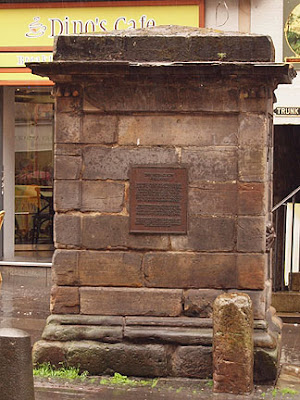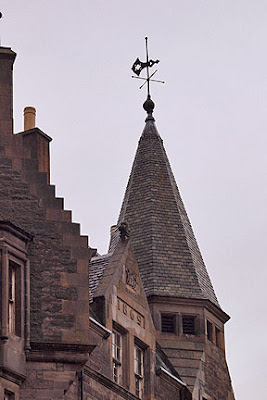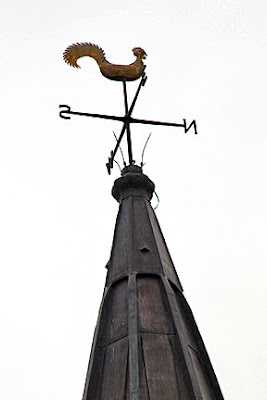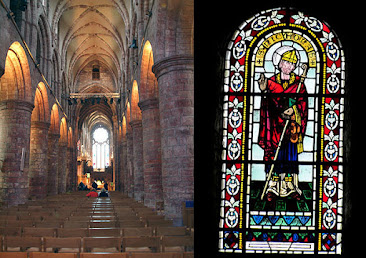And got a warm greeting on a rainy day.
 |
| Giant Deer |
 |
| The Millennium Clock |
We got off the bus and walked in the rain.
This was a well:
Maybe Monty Python got the "I'm not dead, yet" idea from this building.
In 1861 a tenement collapsed; Joseph Mclver, was pulled to safety when rescuers heard his call of "Heave awa, chaps, an'm no, deid yet."This museum was created by Patrick Murray, a middle aged bachelor who said, "Children are only tolerable after their baths and on the way to bed."
Didn't know US 50's television had such an impact on Great Britain.
Now this seems more like it:
Then it was back to the ship and time to head for home.















































































